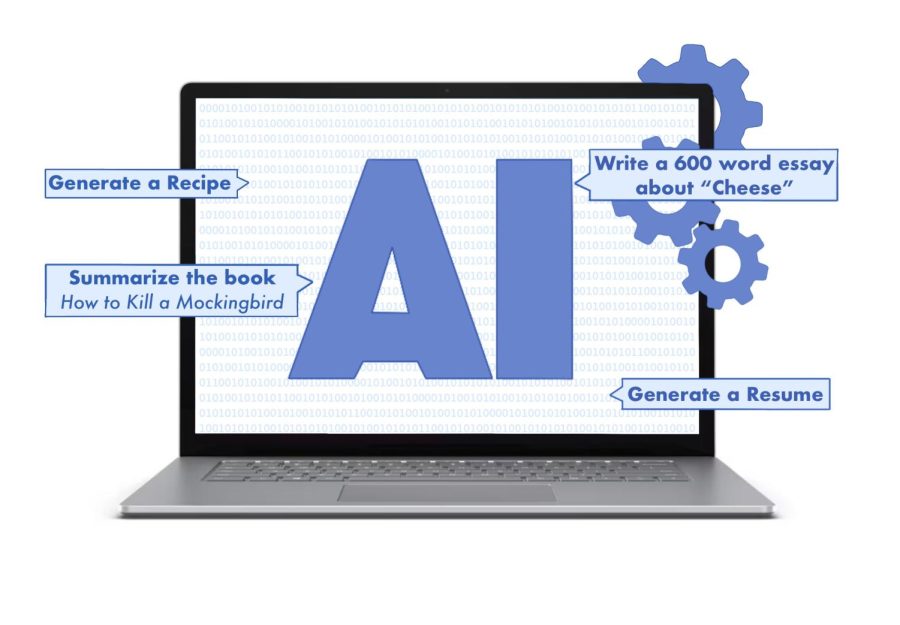AI: Friend or foe?
AI services are designed to process large amounts of data and recognize patterns.
May 8, 2023
AI, otherwise known as Artificial Intelligence, is an emerging variety of technological systems created to perform human-like tasks. Specific AI services are composed of expert systems, speech recognition, natural language processing, deep learning, neural networks and computer vision. These services are designed to acquire large amounts of data and recognize patterns that are then processed into actionable information.
According to SAS, “The term artificial intelligence was coined in 1956, but AI has become more popular today thanks to increased data volumes, advanced algorithms, and improvements in computing power and storage.” Early AI research was composed of technological attempts to formulate algorithms of symbolic methods and problem-solving. Nowadays, modern AI technology has become more advanced, and through deep neural networks, it can achieve incredible pattern frequency and data accuracy through progressive learning algorithms.
AI can be separated into multiple categories based on the range of simple to more complex skills. One way to analyze the system is between weak and strong AI.
Weak AI is more focused on performing a specific task. According to IBM, “Weak AI relies on human interference to define the parameters of its learning algorithms and to provide the relevant training data to ensure accuracy.” Some examples are virtual assistants, such as Siri, social media news feeds and autonomous driving vehicles.
Strong AI, however, is supposed to have the capability to have indistinguishable characteristics of the human mind. Such characteristics include self-consciousness, deep learning and the ability to learn and adapt through experiences without human interference. According to IBM, “While human input accelerates the growth phase of Strong AI, it is not required, and over time, it develops a human-like consciousness instead of simulating it…” Still, strong AI is only theoretical.
AI has improved the modern economy through its applications in retail, healthcare, manufacturing, life sciences, finance, etc. With consistent success and rapid growth, according to IDC, “Worldwide revenues for the artificial intelligence (AI) market, including software, hardware, and services, is forecast to grow 19.6% year over year in 2022 to $432.8 billion…[and] the market is expected to break the $500 billion mark in 2023.”
This expanding technological system is positive in so many ways. But will AI replace human jobs and increase unemployment rates?









